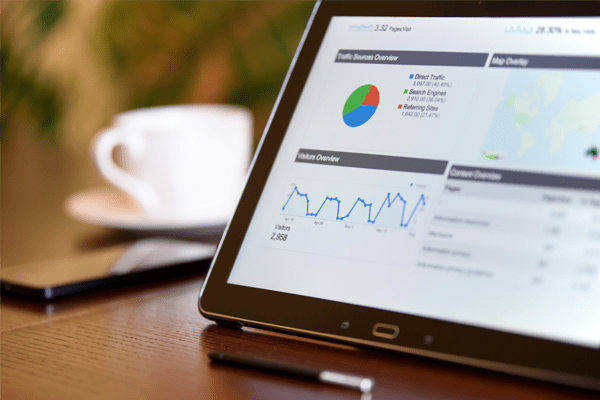How To Understand & Use Google Analytics

 What do all of those numbers mean? How can I use analytics to make smart decisions? How can I track specific goals I have for my website? Analytics can be confusing if you aren’t sure how to read them, what you are looking for or how to track what you want. Here at D4 our experts help you configure, read and analyze your data so that you can make more informed decisions. We use Google analytics with our SEO clients so that we can make informed decisions about how to optimize campaigns, we use Google analytics to make suggestions on whether or not you need responsive design, and we use Google analytics to get insights into your website and help you be proactive with your digital strategy. If you are looking at your analytics and trying to make sense of it all, we suggest focusing on these 3 things…
What do all of those numbers mean? How can I use analytics to make smart decisions? How can I track specific goals I have for my website? Analytics can be confusing if you aren’t sure how to read them, what you are looking for or how to track what you want. Here at D4 our experts help you configure, read and analyze your data so that you can make more informed decisions. We use Google analytics with our SEO clients so that we can make informed decisions about how to optimize campaigns, we use Google analytics to make suggestions on whether or not you need responsive design, and we use Google analytics to get insights into your website and help you be proactive with your digital strategy. If you are looking at your analytics and trying to make sense of it all, we suggest focusing on these 3 things…
#1: Audience Overview
Basically, this will give you a good idea of what your traffic is doing. The key figures we suggest you look at are sessions, % new sessions, and bounce rate. Sessions are unique visits to your website during that period of time. This number is good to compare with the previous year over the same period. This will give you an idea of if your traffic is increasing year-over-year or not. % new sessions explains what portion of your visitors are new, and what portion is returning. Certain businesses will have different goals here. You may want lots of new traffic, new customers, new potential. Or, you may want returning visitors to be a larger number, have a more steady following, provide content to the same people, etc. Bounce rate tells you how many people stay on your site and look at more than 1 page. For example, if your bounce rate is 30%, then 30% of people navigate away from your website after viewing just 1 page. The lower the percentage the better.
#2: Acquisition Overview
Simply put, this will tell you where your traffic comes from. Typically, you will see referral, organic search, direct, email and social traffic. If you are using adwords and other online advertising types you might also see paid search and display ad traffic. Referral traffic is when another website links to your website and someone clicks on that link, that website is “referring” them to you. Organic search traffic is when someone types keywords related to your products or services in search engines and finds your in the search results. Direct traffic is when someone types your exact website address in their search bar. Email and social traffic come from your emails and social media channels. You can also see bounce rates for each traffic type, to show you what traffic sources are the most effective.
#3: Behavior Overview
This section will tell you what pages are the most visited on your website. This will help you understand what your audience wants to see, which pages to focus your optimization on, what people find valuable and what needs to be promoted more effectively. We also highly suggest setting up goals in analytics. When you want to track clicks on a specific link, how many downloads a certain white paper gets, or how many people view your video, you should be setting up goal tracking. This is a much more in-depth use of analytics and will likely require help from experts. If this is the case, just call us! We can help you set up your analytics so that it works for you and tells you what you need to know. Does this sound like something you can tackle? Awesome! Take the bull by the horns and start making more informed digital decisions! Does this sound a bit complicated and hard to understand? No problem. We can help you navigate, setup, or monitor your analytics. Just give us a call and we will set up a free consultation.
